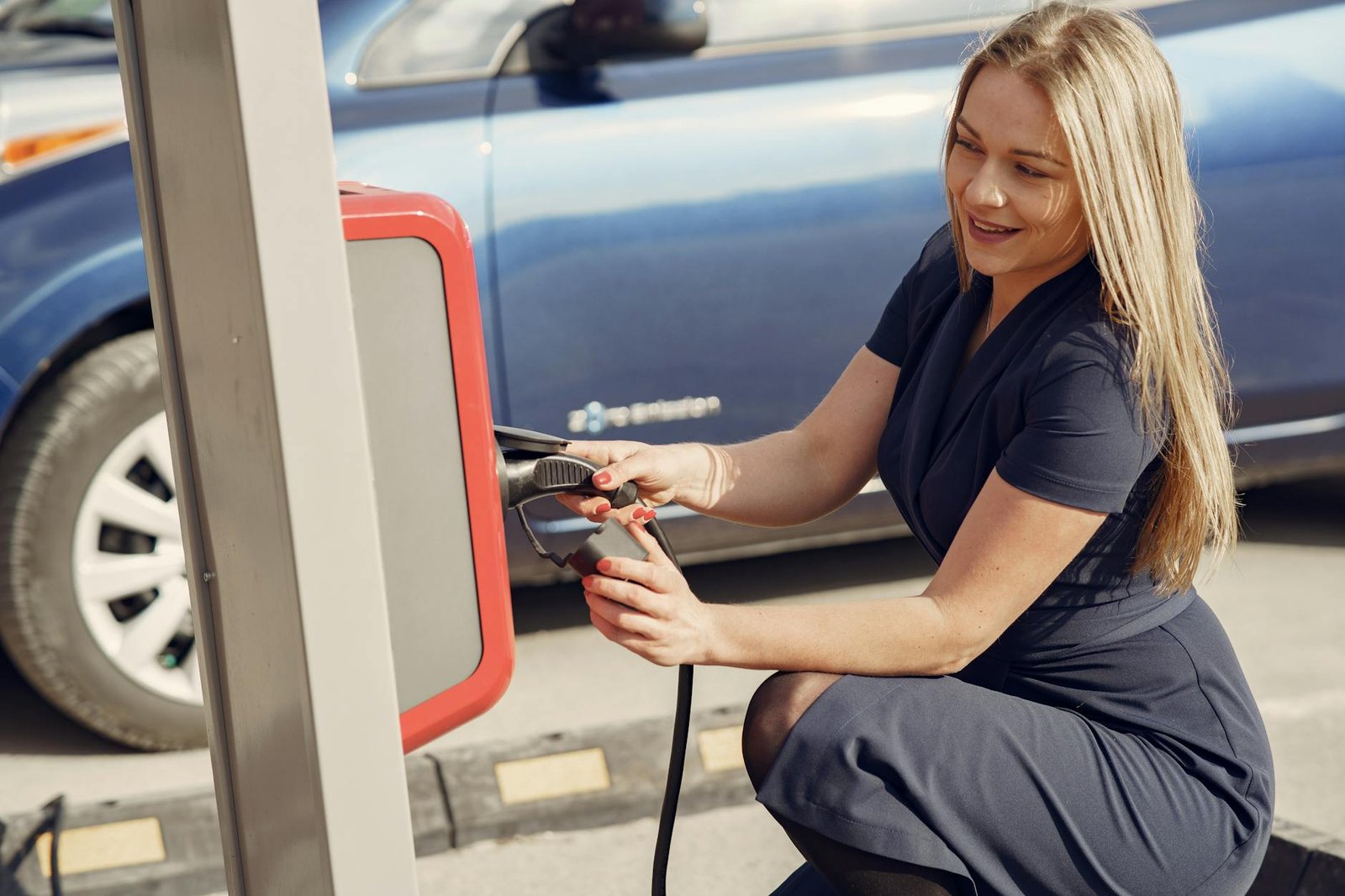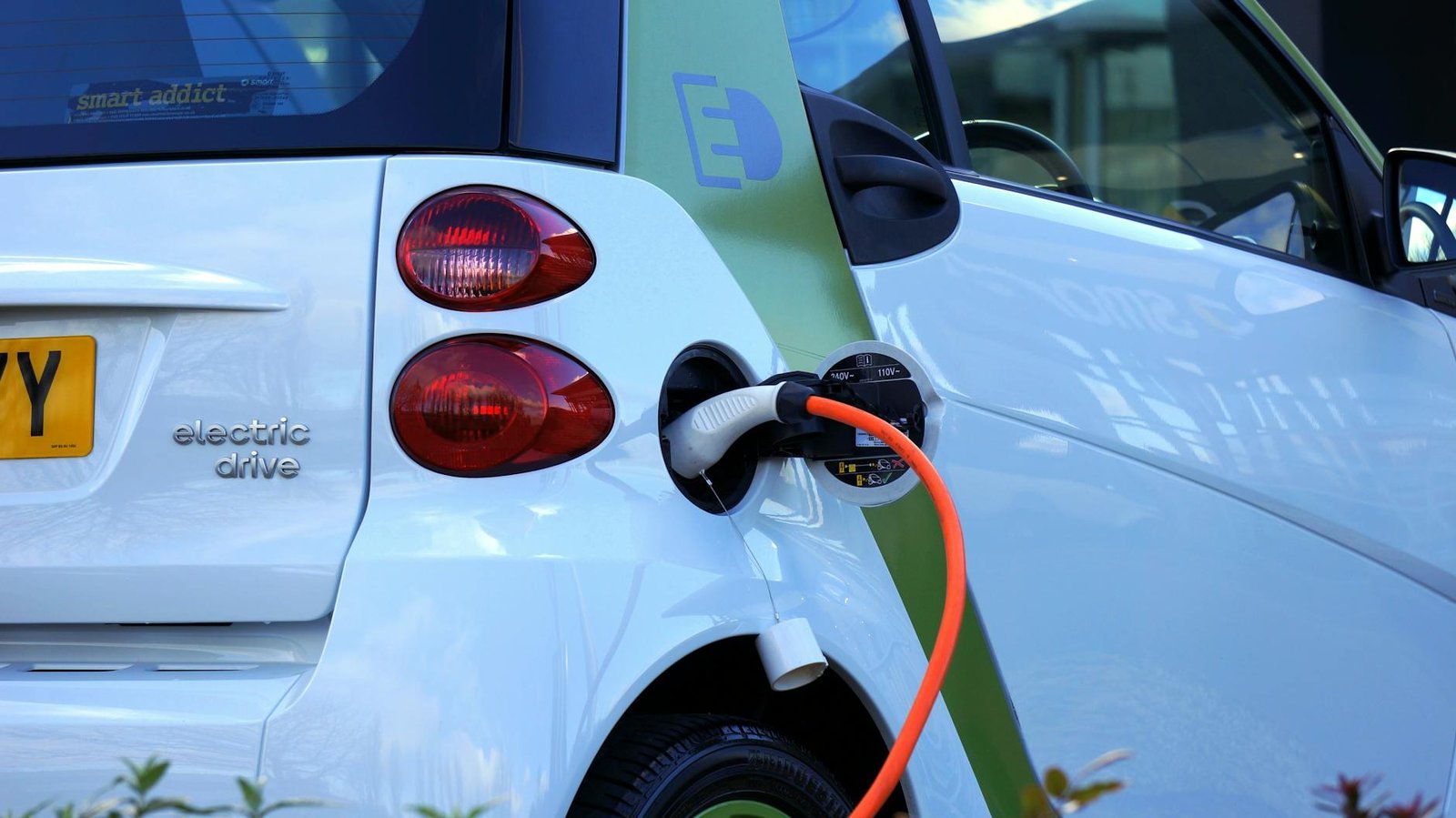Key Highlights
- California has announced a new law that will require all new vehicles sold in the state to be electric or plug-in electric hybrids by 2035.
- This law is part of California’s efforts to reduce emissions and combat air pollution.
- The state is aiming to achieve a 100% zero-emission vehicle (ZEV) market by 2035.
- California’s electric car law has faced pushback from the federal government, but it has received support from automakers and environmental groups.
- The transition to electric vehicles (EVs) will have economic and environmental implications, including benefits for air quality and the potential impact on the auto industry.
- California’s EV law will also require the development of charging infrastructure and provide incentives for EV adoption.
Introduction
California has long been a leader in environmental and climate initiatives, and its latest move to transition to electric vehicles (EVs) is no exception. In September 2020, Governor Gavin Newsom signed an executive order that set a goal for all new cars and light trucks sold in the state to be zero-emission vehicles by 2035. This means that starting in 2035, all new vehicles sold in California will need to be electric or plug-in electric hybrids, as mandated by the California Air Resources Board last year. This law will have a significant impact on new car sales in California, with the goal of increasing the share of zero-emission vehicles from 16% in 2020 to 100% for 2035 models.
The transition to electric vehicles is part of California’s broader efforts to reduce greenhouse gas emissions, combat air pollution, and improve air quality. The state has set ambitious targets for reducing emissions, and the transportation sector is a significant contributor to greenhouse gas emissions and air pollution. By phasing out gas-powered cars and promoting the adoption of electric vehicles, specifically in the San Joaquin Valley, California aims to improve air quality, reduce reliance on fossil fuels, and mitigate the impacts of climate change.
While California’s electric car law is a significant step forward, it has faced pushback from the federal government and industry representatives. The battle between the state and federal authorities highlights the broader debate over state rights and environmental regulations. Despite the challenges, California remains committed to its goals and is taking steps to implement the necessary infrastructure and incentives to support the transition to electric vehicles, including offering support to property owners for installing charging equipment.
Understanding California’s Electric Vehicle (EV) Mandate

California’s electric vehicle (EV) mandate is an ambitious initiative aimed at reducing emissions and transitioning to a zero-emission transportation system. The mandate, announced in September 2020, requires all new cars and passenger trucks sold in California to be zero-emission vehicles (ZEVs) by 2035, including battery electric vehicles (EVs), plug-in hybrid electric vehicles (PHEVs), and fuel cell electric vehicles (FCEVs). This means that all new vehicles sold in the state will need to be either fully electric or plug-in hybrid electric vehicles, also known as zero emission vehicles (ZEVs), starting in model year 2026. The percentage of ZEVs and PHEVs required to be sold will increase each year, reaching 100% in model year 2035.
The California Air Resources Board (CARB) is the agency responsible for implementing and enforcing the state’s clean air regulations. CARB has been at the forefront of efforts to reduce air pollution and combat climate change, and the EV mandate is one of its most significant initiatives to date.
The 2035 zero-emission vehicle goal is part of California’s broader strategy to address air pollution and greenhouse gas emissions. Transportation is a major source of air pollution and greenhouse gas emissions in the state, and rapidly accelerating the number of ZEVs on our roads and highways, as outlined in the California Electric Car Law, is seen as a critical step towards improving air quality and reducing the impacts of climate change. This includes ending the sales of new internal-combustion engine passenger vehicles by 2035 and achieving carbon neutrality by 2045, as stated in Governor Newsom’s mandate.
Air pollution poses significant health risks, particularly in densely populated areas and communities near major roadways. By promoting the adoption of electric vehicles, California aims to reduce harmful emissions and improve air quality, especially in areas that are disproportionately affected by pollution.
The 2035 Zero-Emission Vehicle Goal
California’s 2035 zero-emission vehicle goal is a key component of the state’s efforts to address climate change and reduce greenhouse gas emissions. The goal was set through an executive order signed by Governor Gavin Newsom in September 2020.
Transportation is the largest source of greenhouse gas emissions in California, accounting for about 40% of the state’s total emissions. The transition to zero-emission vehicles is seen as a critical step towards achieving the state’s climate goals and reducing its carbon footprint.
By requiring all new vehicles sold in California to be zero-emission vehicles by 2035, the state aims to accelerate the adoption of electric vehicles and reduce reliance on fossil fuels. The goal is aligned with California’s broader efforts to decarbonize its economy and transition to clean energy sources.
The 2035 zero-emission vehicle goal has the potential to have a significant impact on the automotive industry and the market for new vehicles. It will require automakers to invest in the development and production of electric vehicles and will drive innovation in battery technology and charging infrastructure.
Impact on California and Beyond
California’s electric car law has the potential to have a significant impact on the state’s air quality, climate change efforts, and clean energy projects. Transportation is a major source of air pollution in California, particularly in densely populated areas and regions with high levels of traffic congestion.
By transitioning to zero-emission vehicles, California aims to improve air quality and reduce harmful emissions that contribute to smog and respiratory health issues. Electric vehicles produce zero tailpipe emissions, which can help reduce the levels of pollutants such as nitrogen oxides and particulate matter in the air.
In addition to the benefits for air quality, the transition to electric vehicles aligns with California’s broader efforts to combat climate change. Transportation is a significant contributor to greenhouse gas emissions, and reducing emissions from the transportation sector is essential for achieving the state’s climate goals.
Furthermore, the increased adoption of electric vehicles can help support the growth of clean energy projects. Electric vehicles can serve as a distributed energy resource, allowing for the storage and utilization of renewable energy. By integrating electric vehicles into the grid, California can maximize the use of renewable energy sources and reduce reliance on fossil fuels, with the help of Pacific Gas & Electric’s (PG&E) EV Fleet Program and its incentives for installing EV charging stations for medium- and heavy-duty vehicle fleets. This program not only benefits California but also has the potential to impact other states and countries in their transition to electric vehicles, ultimately saving drivers money on operation and maintenance costs for the same number of miles driven.
Federal vs. State: The Battle Over California’s EV Law

While California’s electric car law has been hailed as a bold and necessary step towards reducing emissions and combating climate change, it has faced opposition from the federal government and industry representatives. The battle over California’s EV law highlights the broader debate over state rights and environmental regulations, with implications for the entire United States. Despite the challenges, California remains committed to its goals and is taking steps to implement the necessary infrastructure and incentives to support the transition to electric vehicles.
The House Bill Against California’s EV Mandate
A bill passed in the U.S. House of Representatives aims to undermine California’s electric car law and prevent other states from implementing similar regulations. The bill would strip the Environmental Protection Agency (EPA) of its power to grant waivers for states to set their own emissions standards, effectively nullifying California’s ability to enforce its EV mandate.
The bill reflects a broader trend of opposition to President Biden’s climate agenda and attempts to limit the authority of states to set stricter emissions standards. It is seen by proponents of the California EV law as an infringement on state rights and an attempt to thwart efforts to reduce vehicle emissions and combat climate change.
The battle over California’s EV law is likely to continue, with legal challenges and political debates expected. However, California remains committed to its goals and will continue to push for the adoption of electric vehicles and the reduction of vehicle emissions.
California’s Waiver from the EPA
California’s ability to set its own emissions standards, including its electric car law, is rooted in a waiver granted by the Environmental Protection Agency (EPA) under the Clean Air Act. The waiver allows California to set more stringent emissions standards than the federal government and has been a key tool in the state’s efforts to address air pollution and combat climate change.
The California Air Resources Board (CARB) is the agency responsible for implementing and enforcing the state’s clean air regulations, including the electric car law. CARB has been at the forefront of efforts to reduce air pollution and has developed a comprehensive set of regulations to achieve the state’s emissions reduction goals.
The waiver has been a source of contention between California and the federal government, with the Trump administration revoking the waiver in 2019. However, the waiver was reinstated by the Biden administration, reaffirming California’s authority to set its own emissions standards and implement its electric car law.
The Legal Framework Supporting California’s EV Mandate
California’s electric car law is supported by a legal framework that includes the Clean Air Act and the state’s authority to set more stringent emissions standards. The California Air Resources Board (CARB) is the agency responsible for implementing and enforcing the state’s clean air regulations, including the electric car law. CARB has the authority to set emissions standards and develop regulations to achieve the state’s emissions reduction goals, including the trailblazing Advanced Clean Cars II rule that promotes the growth of advanced clean cars in California.
The Clean Air Act and State Rights
The Clean Air Act is a federal law that sets national air quality standards and establishes the framework for regulating air pollution. The law gives the Environmental Protection Agency (EPA) the authority to set emissions standards for vehicles and other sources of air pollution.
However, the Clean Air Act also includes provisions that allow states to set their own emissions standards if they can demonstrate that their standards are at least as protective as the federal standards. This provision has been the basis for California’s authority to set more stringent emissions standards and implement its electric car law.
The California Air Resources Board (CARB) is the state agency responsible for implementing and enforcing California’s clean air regulations. CARB has the authority to set emissions standards and develop regulations to achieve the state’s emissions reduction goals. Other states can adopt California’s emissions standards if they obtain a waiver from the EPA.
Previous Instances of EPA Waivers for California
California has a long history of obtaining waivers from the Environmental Protection Agency (EPA) to set its own emissions standards. The state’s authority to set stricter emissions standards dates back to the 1960s when it first sought a waiver to address its unique air pollution challenges.
Over the years, California has obtained multiple waivers from the EPA, allowing it to implement regulations to reduce air pollution and combat climate change. These waivers have been critical in enabling California to develop its clean air regulations and pursue its ambitious emissions reduction goals.
The California Air Resources Board (CARB) works closely with the EPA to obtain and maintain these waivers. The waivers are granted based on California’s demonstrated need for more stringent emissions standards and its ability to achieve significant emissions reductions.
California’s success in obtaining waivers from the EPA has paved the way for other states to adopt similar emissions standards and pursue their own clean air initiatives. The state’s leadership in this area has had a positive impact on air quality and public health, both within California and beyond.
Economic and Environmental Implications

The transition to electric vehicles and the implementation of California’s electric car law will have economic and environmental implications. This section will explore the benefits of transitioning to electric vehicles and the potential impact on the auto industry.
Benefits of Transitioning to Electric Vehicles
Transitioning to electric vehicles offers numerous benefits for both the environment and public health. Electric vehicles produce zero tailpipe emissions, which helps reduce greenhouse gas emissions and improve air quality. Here are some of the key benefits of transitioning to electric vehicles:
- Reduced greenhouse gas emissions: Electric vehicles produce significantly lower greenhouse gas emissions compared to gasoline-powered vehicles. This helps reduce the carbon footprint and mitigate the impacts of climate change.
- Improved air quality: Electric vehicles produce zero tailpipe emissions, which helps reduce air pollution and improve air quality, particularly in densely populated areas and regions with high levels of traffic congestion.
- Energy efficiency: Electric vehicles are more energy-efficient compared to gasoline-powered vehicles, meaning they require less energy to travel the same distance. This helps reduce overall energy consumption and dependence on fossil fuels.
- Renewable energy integration: Electric vehicles can serve as a distributed energy resource, allowing for the storage and utilization of renewable energy. By integrating electric vehicles into the grid, excess renewable energy can be stored in vehicle batteries and used during peak demand periods.
Potential Economic Impact on the Auto Industry
The transition to electric vehicles and the implementation of California’s electric car law have the potential to impact the auto industry in several ways. While the shift towards electric vehicles presents new opportunities for automakers, it also poses challenges for traditional manufacturers. Here are some of the potential economic impacts of California’s EV law on the auto industry:
- Changes in market demand: The increasing demand for electric vehicles may lead to a decline in sales of traditional gasoline-powered vehicles. Automakers will need to adapt to the changing market dynamics and invest in the development and production of electric vehicles to meet consumer demand.
- Investment in research and development: The transition to electric vehicles requires significant investment in research and development to improve battery technology, charging infrastructure, and other aspects of electric vehicle technology. Automakers will need to allocate resources to stay competitive in the evolving market.
- Job creation and workforce transition: The shift towards electric vehicles will create new job opportunities in the manufacturing, maintenance, and charging infrastructure sectors. However, it may also require the retraining and reskilling of the existing workforce to adapt to the changing industry landscape.
- Supply chain implications: The transition to electric vehicles will have implications for the automotive supply chain. Automakers will need to work with suppliers to ensure a stable and reliable supply of components and materials for electric vehicle production.
Public and Industry Response
The public and industry response to California’s electric car law has been mixed. While there is widespread support for the transition to electric vehicles and the reduction of emissions, there are also concerns and challenges that need to be addressed. This section will explore the support and opposition from different sectors and automakers’ stance on the EV mandate.
Support and Opposition from Different Sectors
Support for California’s electric car law comes from various sectors, including environmental groups, clean energy advocates, and public health organizations. These stakeholders recognize the importance of reducing emissions and improving air quality for the well-being of communities and the planet. They have been actively involved in public outreach efforts and have promoted the benefits of electric vehicles, such as financial incentives and reduced operating costs. Additionally, many industry, academic, and government organizations have also shown support for the law, putting extensive effort into ensuring the safety of fuel cell electric vehicles and hydrogen fueling equipment through best practices. However, there are also some sectors, such as the oil and gas industry, that have opposed the law due to potential impacts on their business.
However, there is also opposition to the electric car law, particularly from industry representatives and organizations. Some concerns raised by the opposition include the potential impact on the auto industry, the availability of charging infrastructure, and the affordability of electric vehicles for low-income communities. These concerns highlight the need for a balanced approach that considers the economic, social, and environmental implications of the transition to electric vehicles, including support and opposition from different sectors such as electric utilities.
Automakers’ Stance on the EV Mandate
Automakers have responded differently to California’s electric car law. Some automakers have embraced the transition to electric vehicles and have made significant investments in the development and production of electric models. They recognize the potential for growth in the electric vehicle market and the importance of reducing emissions.
Other automakers have expressed concerns about the feasibility and timing of the EV mandate. They argue that widespread adoption of electric vehicles will require substantial infrastructure investment and consumer acceptance. These automakers have called for a more gradual transition to electric vehicles and have emphasized the need for a supportive regulatory framework and incentives to drive consumer demand, including advancements in EV charging technology.
Overall, the automakers’ stance on the EV mandate reflects the challenges and opportunities associated with the transition to electric vehicles. As the market for electric vehicles continues to grow, automakers will need to adapt their strategies and offerings to meet consumer demand and regulatory requirements.
The Path to 2035: Implementation Challenges

Implementing California’s electric car law and achieving the 2035 zero-emission vehicle goal will require overcoming various challenges. This section will explore the infrastructure requirements for EV expansion and the incentives and subsidies available for EV adoption.
Infrastructure Requirements for EV Expansion
One of the key challenges in transitioning to electric vehicles is the need for adequate charging infrastructure. California will need to invest in the development and expansion of electric vehicle charging stations to support the growing demand for electric vehicles. This includes both public charging infrastructure and residential charging options.
The expansion of charging infrastructure will require significant investment in electrical infrastructure and grid capacity. Charging stations will need to be strategically located to ensure convenient access for EV owners, particularly in urban areas and along major transportation routes.
Managing electricity consumption during peak hours will also be a challenge. As more electric vehicles are added to the grid, the demand for electricity will increase, particularly during peak periods. This will require careful planning and coordination to ensure that electricity supply can meet demand without straining the grid.
To address these challenges, California has established programs and initiatives to support the development of charging infrastructure, including the Clean Vehicle Rebate Project and funding for charging station installations. These incentives and subsidies are designed to encourage EV adoption and support the growth of charging infrastructure.
Incentives and Subsidies for EV Adoption
To encourage the adoption of electric vehicles, California offers various incentives and subsidies. These programs provide financial support to offset the higher upfront costs of electric vehicles and make them more affordable for consumers. Here are some of the incentives and subsidies available for EV adoption:
- Clean Vehicle Rebate Project: The Clean Vehicle Rebate Project offers rebates to individuals, businesses, and government entities for the purchase or lease of eligible electric vehicles. The rebate amounts vary depending on the type of vehicle and the applicant’s income level.
- State-funded programs: California provides funding for programs and initiatives that support the adoption of electric vehicles. These programs include grants for charging infrastructure installations, incentives for fleet electrification, and financial support for low-income individuals to purchase electric vehicles.
- Tax credits and exemptions: Californians may be eligible for federal tax credits and state income tax credits for purchasing or leasing electric vehicles. Additionally, electric vehicles are exempt from certain vehicle-related fees, such as smog abatement fees and high-occupancy toll lane fees.
These incentives and subsidies aim to make electric vehicles more accessible and affordable for a wide range of consumers. By reducing the upfront costs and providing financial support, California hopes to accelerate the adoption of electric vehicles and achieve its zero-emission vehicle goals.
Comparing California’s EV Laws with Other States
California’s electric car law has inspired other states to follow its lead in promoting the adoption of electric vehicles. This section will explore the states that have adopted similar EV mandates and those that have resisted such mandates.
States Following California’s Lead
Several states have adopted regulations that follow California’s lead in promoting the adoption of electric vehicles. These states have set their own targets and requirements for zero-emission vehicle (ZEV) sales, aligning with California’s goals. Here are some examples of states that have followed California’s lead:
- Colorado: Colorado has adopted regulations that require automakers to sell a certain percentage of ZEVs in the state. The regulations aim to increase ZEV sales to 5% of new vehicle sales by 2023.
- New Jersey: New Jersey has set a goal of having 330,000 ZEVs on the road by 2025. The state provides various incentives, including rebates and grants, to encourage the adoption of electric vehicles.
- Oregon: Oregon has set a target for all new light-duty vehicle sales to be electric by 2035. The state also offers incentives and grants to support the adoption of electric vehicles.
These states recognize the environmental and economic benefits of electric vehicles and are taking steps to promote their adoption. By setting targets and providing incentives, these states aim to accelerate the transition to electric vehicles and reduce emissions.
States Resisting Similar EV Mandates
While some states have embraced California’s electric car law, others have resisted adopting similar mandates. These states have expressed concerns about the economic impact of transitioning away from fossil fuels and have prioritized other energy policies. Here are some examples of states that have resisted similar EV mandates:
- Texas: Texas has not adopted a ZEV mandate and has instead focused on promoting natural gas and hydrogen fuel cell vehicles. The state is known for its oil and gas industry and has emphasized the importance of maintaining a diversified energy portfolio.
- Oklahoma: Oklahoma has taken a similar approach to Texas and has not adopted a ZEV mandate. The state has emphasized the importance of promoting natural gas as a clean transportation fuel and has invested in infrastructure to support natural gas vehicles.
- Mississippi: Mississippi has not adopted a ZEV mandate and has instead focused on promoting biofuels and other alternative fuels. The state has prioritized rural economic development and has emphasized the importance of supporting the agricultural sector.
These states have taken different approaches to promoting clean transportation and reducing emissions. While they have not adopted ZEV mandates, they are investing in alternative fuels and technologies as part of their energy policies.
Global Perspective: How California’s Law Fits Worldwide EV Trends
California’s electric car law is part of a global trend towards the adoption of electric vehicles and the reduction of greenhouse gas emissions. This section will explore how California’s law aligns with EV policies in other countries and the potential for international collaboration and competition in the EV market.
EU and China’s EV Policies

The European Union (EU) and China are leading the way in the adoption of electric vehicles and the reduction of greenhouse gas emissions from the transportation sector. Both regions have implemented policies and regulations to promote the adoption of electric vehicles and support the development of clean energy technologies. Here are some examples of EU and China’s EV policies:
- EU: The EU has set a target for at least 30 million zero-emission vehicles on the road by 2030. The EU has also implemented stricter emissions standards for new vehicles and provides financial incentives for EV adoption.
- China: China is the largest market for electric vehicles and has set ambitious targets for EV sales. The Chinese government provides subsidies and financial incentives for EV adoption and has invested in charging infrastructure.
California’s electric car law aligns with the global trend towards clean transportation and the reduction of greenhouse gas emissions. There is potential for international collaboration and competition in the EV market, as countries and regions work towards common goals of reducing emissions and mitigating climate change.
International Collaboration and Competition in EV Technology
The transition to electric vehicles has sparked international collaboration and competition in the development of clean energy technologies and the growth of the global EV market. Here are some examples of international collaboration and competition in the EV sector:
- Renewable fuels: Countries and regions are investing in the development of renewable fuels and technologies to support the growth of the EV market. This includes advancements in battery technology, charging infrastructure, and renewable energy generation.
- Technology advancements: The development of EV technology is a global endeavor, with companies and researchers from around the world working together to improve battery performance, increase range, and reduce charging times.
- Global market: The EV market is becoming increasingly global, with automakers and technology companies competing for market share and striving to meet the demands of consumers. This competition is driving innovation and pushing the boundaries of EV technology.
California’s electric car law positions the state as a leader in the global EV market and encourages further collaboration and competition in the development and adoption of clean energy technologies. This global collaboration and competition are essential for driving the growth of the EV market and achieving emissions reduction goals.
Technological Advancements Driving the EV Revolution

Technological advancements are playing a crucial role in driving the electric vehicle revolution. This section will explore the evolution of battery technology and the role of autonomous vehicles in an EV-dominant future.
Battery Technology and Its Evolution
Battery technology is a critical component of electric vehicles, and advancements in battery technology have played a significant role in driving the adoption of electric vehicles. Here are some key aspects of battery technology and its evolution:
- Energy density: Improvements in battery energy density have allowed for longer electric vehicle ranges and reduced charging times. Higher energy density means that batteries can store more energy in a smaller and lighter package.
- Durability and lifespan: Battery durability and lifespan have improved over time, allowing for longer battery life and reduced maintenance costs. Battery manufacturers have made advancements in battery chemistry and design to enhance durability and optimize performance.
- Charging infrastructure: The development of fast-charging technology has made charging electric vehicles more convenient and efficient. Fast-charging stations can provide a significant amount of charge in a relatively short amount of time, reducing the overall charging time for electric vehicles.
These advancements in battery technology have contributed to the increased adoption of electric vehicles and have addressed some of the initial concerns around range anxiety and charging infrastructure. Continued research and development in battery technology will further improve the performance and affordability of electric vehicles.
The Role of Autonomous Vehicles in an EV-Dominant Future
Autonomous vehicles have the potential to revolutionize the transportation sector and play a significant role in an EV-dominant future. Here are some key aspects of the role of autonomous vehicles in the EV revolution:
- Electric autonomous vehicles: The combination of autonomous vehicle technology and electric vehicle technology can lead to more efficient and sustainable transportation systems. Electric autonomous vehicles can reduce emissions, improve traffic flow, and enhance road safety.
- Vehicle-to-grid integration: Autonomous vehicles can serve as a distributed energy resource and contribute to grid stability. By integrating with the electrical grid, electric autonomous vehicles can store and release energy during peak demand periods, helping to balance the grid and support renewable energy integration.
- Mobility-as-a-service: Autonomous vehicle technology can enable new mobility services, such as ride-sharing and on-demand transportation. These services can reduce the need for private vehicle ownership and promote the use of electric autonomous vehicles.
The development and deployment of autonomous vehicles are still in progress, and there are regulatory, technological, and societal challenges that need to be addressed. However, the potential benefits of electric autonomous vehicles are significant and can contribute to a more sustainable and efficient transportation system.
Conclusion
In conclusion, the California Electric Car Law sets a bold vision for a sustainable future by mandating a transition to zero-emission vehicles. This groundbreaking initiative not only impacts California but also influences global EV trends. As the world moves towards cleaner transportation, understanding the economic, environmental, and technological implications becomes paramount. By comparing California’s EV laws with other states and examining international perspectives, we see the ripple effect of this legislation. The path to 2035 presents challenges, but with incentives, subsidies, and infrastructure developments, the vision of an EV-dominant future becomes attainable. To stay informed or discuss further, don’t hesitate to get in touch.
Frequently Asked Questions
Will I be able to buy a gas-powered car in California after 2035?
Yes, the 2035 zero-emission vehicle goal in California applies to new cars and passenger trucks sold in the state. Gasoline cars can still be driven, registered, and sold as used cars after 2035.
What are the exceptions to the 2035 EV mandate?
The California Air Resources Board (CARB) has the authority to grant exemptions and make special provisions for certain vehicles or circumstances. These exemptions and special provisions are determined on a case-by-case basis.
How does California’s EV mandate affect out-of-state car buyers?
California’s EV mandate applies to vehicles sold within the state, regardless of where the buyer resides. Out-of-state buyers can still purchase new gasoline-powered vehicles in California and register them in their home state.
Are there incentives for transitioning to an electric vehicle in California?
Yes, California offers various incentives and subsidies to encourage the adoption of electric vehicles. These include financial incentives through the Clean Vehicle Rebate Project and state-funded programs for charging infrastructure and low-income consumer vehicle purchases.
How will California’s EV mandate impact charging infrastructure development?
California’s EV mandate is expected to have a significant impact on the development of electric vehicle charging infrastructure in the state. The California Energy Commission is actively working to support the deployment of infrastructure needed to fuel zero-emission vehicles. This includes investments in charging stations and advancements in technology to ensure convenient and widespread access to charging infrastructure.
What measures are being taken to make EVs more affordable?
To make electric vehicles more affordable, California has implemented various measures. These include financial support programs such as rebates and grants that provide incentive amounts to offset the higher upfront costs of electric vehicles. The state is also committed to ensuring equitable access to electric vehicles for all communities, especially those most impacted by poor air quality.
Can existing gas-powered vehicles be converted to electric?
Yes, it is possible to convert existing gas-powered vehicles to electric. Conversion kits and retrofitting services are available to transform conventional vehicles into electric vehicles. However, it is important to note that the process of converting a vehicle to electric must meet the requirements and regulations set by the California Air Resources Board (CARB) to ensure compliance with emissions standards.
What support is available for businesses transitioning their fleets to electric vehicles?
Businesses transitioning their fleets to electric vehicles can benefit from various types of support. Grant funding is available to assist with the costs of purchasing or leasing electric vehicles, as well as the installation of charging infrastructure. Additionally, businesses can access resources and expertise in fleet management to help navigate the transition process efficiently.
| Column Name A | Column Name B |
| Grant Funding | Financial support for purchasing or leasing electric vehicles |
| Clean Cars | Incentives and rebates to promote the adoption of electric vehicles |
| Fleet Management | Expertise and resources to assist businesses in managing and transitioning their vehicle fleets |













